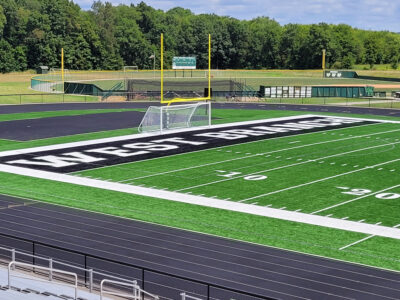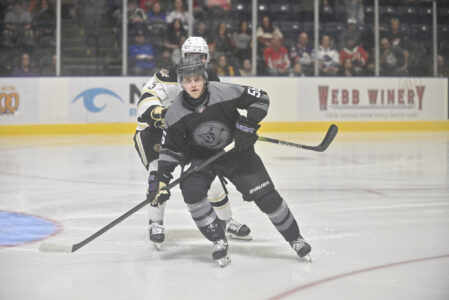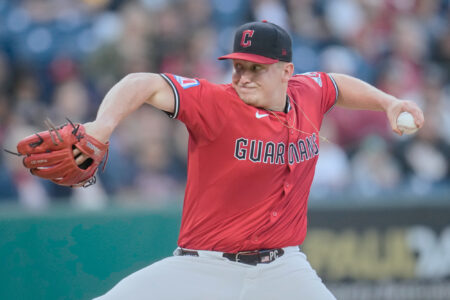Once a luxury, turf has become king in Mahoning Valley

Staff file photo / Dan Hiner West Branch installed artificial turf at Clinton Heacock Stadium before the 2025 season.
In 2005, artificial turf was installed at Warren’s Mollenkopf Stadium, marking the first time an area high school’s football playing surface was transformed from natural grass to synthetic turf.
At the time, many viewed the change as a luxury.
Thom McDaniels, then serving as the Warren G. Harding head coach, knew it was much more than just an aesthetic showpiece.
“When district administrators were weighing their options, they came to me and asked my opinion on whether or not they should proceed with the project,” McDaniels said. “To me, it was a no-brainer. Turf fields benefit the entire community. It allows for opportunities far beyond football.”
McDaniels was also aware of the financial benefits a turf field could provide to the district. He coached at Canton McKinley in 1997 when turf was introduced to Fawcett Stadium.
“We knew the initial up-front costs would be high, doing this from scratch,” McDaniels said. “But I did my homework, and I knew that over time, once that turf was installed, there was no doubt that this would actually be a cost-savings measure.
“Turf requires far less labor, less materials and less overall maintenance. It also provides a lot of additional revenue opportunities, such as hosting playoff games. Over time, there was no doubt this was the prudent way to go.”
From a football standpoint, McDaniels said it made even more sense.
“Turf provides more efficient practices, it takes some of the guesswork out of the equation,” McDaniels said. “Mother Nature is undefeated. If she wanted to dump three straight days of rain on our practice field, it might have altered our practice schedule. With the turf, we proceeded as planned.”
Today, turf has become the rule rather than the exception.
McDaniels noted that all 19 football-playing schools in Stark County play their home games on artificial turf.
Closer to home, of the 45 football-playing schools in the Mahoning Valley, 33 play their home games on artificial turf.
The number of schools turning to turf expanded by two this year as West Branch and Brookfield replaced their grass fields with turf.
Brookfield coach Randy Clark, who also serves as the district’s maintenance supervisor, says he conducted a study to determine the cost difference between maintaining a turf field as opposed to a grass field. He estimates that the district will save roughly $250,000 in maintenance costs over a 10-year period now that the high school is equipped with the turf field.
“I’m basing this on just the bare minimum of upkeep for a grass field, which includes watering, lining, mowing and such,” Clark said. “Then there are always additional problems. Along with wear and tear, you’re always going to be facing weather issues of too much water, too little water and so on.”
In addition to the cost savings, Clark believes the turf is already paying dividends to the entire community. He noted that the field and surrounding track is open to the community when not in use by the district. In addition to football, the field is utilized by the soccer, baseball and softball programs. Brookfield’s youth baseball and soccer programs also have access to the field.
The field is lined for soccer games. It is also lined with a baseball and softball diamond for practice purposes.
“The baseball and softball teams used to have to practice in the gym. Now they can do so outside on the turf,” Clark said. “That is saving wear and tear on our gym floor. The band will benefit. Already this year, with the drought conditions we were facing all month long, we would normally be practicing on a field that would look and feel like concrete. Now, weather isn’t an issue.”
Brookfield’s turf includes an eight-year warranty. However, Clark expects the lifespan to exceed 10 years.
In 2011, the grass field at Niles’ Bo Rein Stadium was in such bad shape that the Red Dragons’ final game of the season – a scheduled home game against Hubbard – was moved to Arrowhead Stadium in Girard.
The incident prompted Niles McKinley High alum Tim Parry to form the REIN Committee, which aimed to raise funds to help defray the cost of installing turf at the stadium. Parry’s efforts were a success, and the committee, through private donations, raised $350,000 of the $700,000 needed to complete the project.
Now in its 13th year of service, the turf at Bo Rein Stadium is showing its age. Parry noted that the field’s seams are coming apart, and the field in general is deteriorating at a rapid pace.
“We had a warranty of eight years, we hoped to get 10 years out of it, so we exceeded expectations,” Parry said. “Those first 10 years, the field was in great shape. But over the past three years, the decline has been rapid and noticeable.”
Parry said that the turf has allowed Niles to host playoff football games nearly every year since 2013. It has also hosted numerous district and regional soccer matches.
“Just this past Saturday, we hosted a junior varsity football game and boys and girls soccer games,” Parry said. “We could never have done that on grass. Right now, between soccer, football, softball, the band and other activities, our field is utilized nearly every night. Just in terms of its benefit to our students, it exceeded our expectations.”
Still, Parry acknowledges that projected costs for the turf’s replacement have also exceeded previous expectations. At the time of its initial installment in 2013, it was projected that the cost for replacement would be roughly $350,000. Because of the rising cost of materials, he now projects the price tag to exceed $500,000.
Parry again expects to help raise funds for the replacement project, which he says ideally would happen before the start of the 2026-27 school year.
“We headed into this project (in 2013) with the hope that the district would take the money it would have put toward the upkeep of a grass field and save it for this moment,” Parry said. “When you first install turf, you have to plan ahead.”
Not everyone is sold on the idea of a turf field.
Champion Local Schools Superintendent John Grabowski acknowledges that “in a perfect world, I’d love for us to have turf.” However, Grabowski is also quick to point out that he questions whether or not turf could actually provide a financial savings for his district.
Brookfield’s renovation, which included additional upgrades to the stadium, came at a price tag of $1.1 million. Grabowski estimates that an initial installation of turf at Champion would cost somewhere between $600,000 and $1 million. The actual price tag would likely edge closer to the $1 million mark.
“It just doesn’t make sense to ask the community to pass any more levies,” Grabowski said. “We have to worry about maintaining a 75-year-old building. We have to worry about operating expenses, while trying to deal with the lack of funding from the state level.
“Unfortunately, now is not the time to put our efforts toward a turf project. We have to focus on maintaining what we have. We have to utilize our money wisely so that we don’t financially burden the community by asking for additional tax dollars.”
Grabowski also isn’t convinced that once installed, turf fields provide financial relief.
“The startup cost alone would be a huge undertaking,” Grabowski said. “Beyond that initial cost, we’re looking at replacement every 10 years. We would save some money on field maintenance costs, but not enough to offset the initial cost plus turf replacement every 10 years.
“Yes, turf would be nice. But financially, it just doesn’t make sense for our particular situation.”
Western Reserve Local Schools Superintendent Dallas Saunders echoed the comments made by Grabowski, noting that the initial installation cost of roughly $1 million “would be a very huge undertaking for a very small district.”
Saunders acknowledges that there are plenty of benefits to turf. Still, he doesn’t believe that those benefits would outweigh the downfalls when it comes to his district.
“We would never be able to pay for that initial cost without the help of private donations, and in a community this small, there’s not many options,” Saunders said. “Raising that type of money from private donors is a bit easier in towns like Warren or Niles, but here we have much more limited resources.”
Like Grabowski, Saunders also questions the argument that turf would pay for itself in the long run from a maintenance standpoint. He noted that Western Reserve doesn’t have a soccer program, which greatly reduces the number of times the football field is used during the course of a school year.
Currently, the field is used for middle school, junior varsity and varsity home games, accounting for roughly 15 games per year. The community’s youth team also plays its home games at the stadium.
“We take good care of our field, we have no trouble maintaining the field so that it’s in good shape for all of our games,” Saunders said. “There might be a week where we have a string of home games and it gets a little torn up, but then we don’t use it for a few days and it gets back on track.
“Our guys do a great job of maintaining the field without financially burdening the district.”
Saunders pointed out that the district uses a well to water the field, eliminating the cost of a city water bill.
“No matter how I look at it, I just can’t see us recouping our investment if we went with turf,” Saunders said. “In our particular situation, it doesn’t make financial sense. The initial investment would be out of our reach. And then having to replace it every 10 years, it would definitely be more costly than what we currently invest in our grass field.”
Saunders, a former head football coach, also believes that natural grass offers a safer environment for the student-athletes as well.
“I don’t have any concrete evidence to back this up, but it’s my belief that a well-maintained grass field is a much safer playing surface than turf,” Saunders said. “Clearly, player safety is the ultimate factor in any decision we make regarding our sports programs.”
NFL players appear to side with Saunders in terms of the safety concerns of turf.
In 2024, NFL Players Association Executive Director Lloyd Howell reported that 92% of NFL players preferred playing on natural grass, citing a much higher percentage of reported injuries occurring on turf fields.
Currently, 17 NFL teams play their home games on turf, while 15 play on natural grass.




